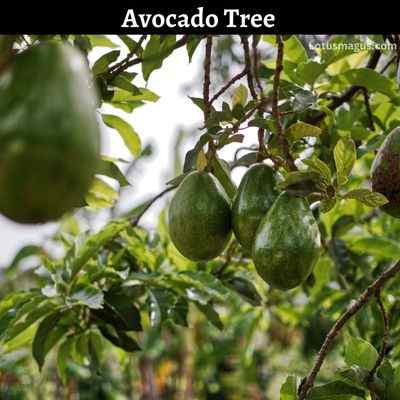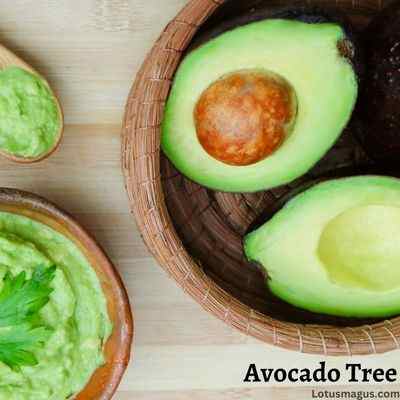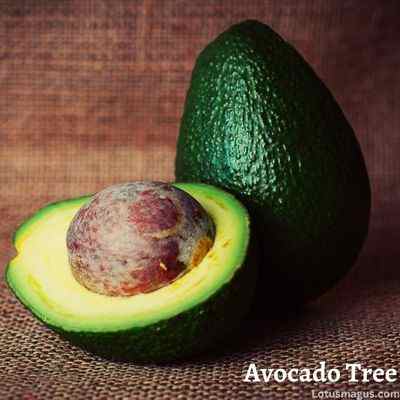Hi, as you know know how vital it is to manage your avocado tree. Pruning is essential for avocado tree health, development, and fruit quality. In this blog we will discusses the advantages of avocado tree trimming and how to do it effectively.
Pruning Avocado Tree : To trim an avocado tree, remove dead wood and low-hanging branches that block access. Build canopy “windows” to allow light in and space the main limbs. Eliminate “v-type” crotches for a conical or pyramidal tree. Little, timely pruning cuts may reduce the need for severe pruning cuts.
Avocado trees may grow tall with numerous branches. These evergreen trees thrive in tropical or subtropical settings with intense sunshine and mild temperatures year-round. Long dry times don’t bother the tree’s thick, leathery leaves.
Early spring avocado tree blossoms are white, creamy, or yellow. These blossoms produce little, green fruits that develop into creamy avocados.
What is Avocado Tree?
Persea americana, the avocado tree, is a multi-stemmed evergreen native to tropical and subtropical Mexico, Central America, and South America. Grafted cultivars are shorter than the 30–60-foot tree. Avocado leaves are shiny, elliptic to ovate, dark green, and 4-8 inches long.
The avocado tree produces enormous, creamy fruits that are famous for their taste and health advantages. The alligator pear gets its name from its scaly covering.
How to Prune an Avocado Tree?

Avocado tree pruning improves health, production, and attractiveness. Pruning boosts growth, improves fruit quality, and prevents disease and pests. Here are some steps on how to prune an avocado tree:
- Remove dead, diseased, damaged, or rubbing branches. Look for branches sprouting straight up from the trunk, which might disrupt the tree’s growth rhythm and restrict fruit yield.
- Start at the top: Remove any branches that are excessively tall or affecting the tree’s form. Avoid over-pruning, which will weaken the tree and diminish fruit output.
- After pruning the top, trim the center, concentrating on branches that are too close together or rubbing. Remove weak, tiny, and angled branches from the trunk.
- Downward: Lastly, trim lower branches that are pulling or affecting the tree’s form. Removing too much from the bottom might make the tree top-heavy and prone to toppling.
- Clean cuts: Cut at a 45-degree angle above a healthy bud or lateral branch with your pruning shears or saw. Stubs invite pests and illness.
- After trimming, clean up the tree’s trash and cut branches. This prevents sickness and pests.
Here are some general avocado pruning principles to keep in mind:

- Prune Horizontal Branches: Close-to-the-ground horizontal branches might block fruit harvesting. To grow higher and make fruit more accessible, prune these branches.
- Cut “Windows” in the Canopy: This allows light and ventilation into the tree. These little canopy gaps let light into the tree’s interior, promoting growth and fruit production.
- Slope-grown trees should be trimmed lower than flat-grown ones. This stabilizes the tree.
- To approach the tree, space the major limbs three to four feet apart. This simplifies tree pruning and growth.
- Rejuvenation pruning includes cutting the tree back to the trunk. But, rejuvenation pruning won’t produce fruit the next year.
- Remove Weak Crotches: “V-type” crotches are mechanically weak and may decay, so prune them out.
- Dead wood attracts pests and illnesses, so remove as much as possible.
- To avoid tree damage, make clean cuts along the trunk contour when making significant cuts.
- Renovate the Grove: Remove huge, interfering, low-lying laterals, improperly crossed limbs, and split crotches. This boosts growth and fruit output.
- To get a nice central-leader form, prune side-shoot growth and eliminate strong, upright water shoots.
- Conical or pyramidal tree shapes maximize light absorption and reduce unproductive dry regions.
Consistent pruning using minor cuts at the right time may reduce the need for big pruning cuts, improving the tree’s health and fruit supply.
Before Pruning Instructions
When trimming an avocado tree, evaluate its form and structure. Shaped avocado trees are easier to maintain and harvest.
- Start with the tree’s form. Avocado trees are conical or pyramidal with a central stem and multiple major branches. For fruit production, the tree should be designed to maximize sunlight reaching the canopy.
- Tree placement matters. To avoid lengthy, hard-to-reach branches, sloped trees should be clipped lower than flat-land trees. Consider nearby buildings and impediments that may impede pruning or fruit harvesting.
- Remove dead or diseased tree wood before pruning. This lets you view the tree’s structure and plan trimming. Remove any crossed or rubbing branches to prevent harm.
- Shape the tree with a center leader and numerous primary lateral branches. To facilitate maintenance and harvesting within the tree, position these branches 3-4 feet apart. Remove any branches that are crowding or affecting the tree’s form.
- Remove low-hanging horizontal branches to let sunshine into the canopy and provide access to the tree. Developing canopy “windows” lets light into the tree’s interior.
Lastly, watch the pruning cuts you make. Clean, trunk-contoured cuts avoid tree harm. Consistent trimming with modest cuts at the proper time may reduce the need for big pruning cuts.
Essential Equipment for Pruning
When it comes to pruning an avocado tree, having the right tools is essential for achieving the best results. Here are some of the tools you’ll need:
- Pruning shears: Hand pruners are used to clip tiny branches and stems. Use pruning shears with a bypass blade to cut cleanly and avoid branch or stem damage.
- Loppers: Loppers cut thicker branches than pruning shears. Long-handled loppers with sharp blades make smooth cuts.
- Handsaw: A handsaw cuts big branches and tree trunks. For simpler cutting and a better grip, use a curved blade saw.
- Pole pruner: Reach high branches using a pole pruner. This tall pole with a cutting blade lets you prune high branches without a ladder.
- Safety gear: Use gloves, eye protection, and strong, traction-friendly shoes or boots during pruning.
Clean and test these tools before utilizing them. Sharpen blades as required to avoid tree damage and easier trimming. Clean and sharp equipment help you get the best results and safeguard your avocado tree.
When to Prune an Avocado Tree?

Avocado tree growth, health, and fruit output depend on pruning time. Between January and May, avocado trees should be pruned. Pruning during fruit set improves shoot-flush, early fruit growth through August, and slows leaf hardening.
Major pruning should only be done in January–April. Pruning at this period lets the tree recover from cuts made during the growth season. Pruning in autumn or winter might injure or shock the tree, which is dormant.
Consider the avocado tree’s growth cycle during pruning. Avocado trees grow fruit at the end of twigs, therefore trimming the whole tree will remove most of the fruit wood for the year. Avoid severe trimming during fruit-bearing season.
Methods For How To Prune An Avocado Tree
To preserve health, fruit output, and form, avocado trees must be pruned. Depending on age, size, and form, avocado trees may be pruned in several ways. Avocado pruning:
- Renewal pruning rejuvenates aging, overgrown trees. Cutting the tree down to its trunk leaves just a few branches. In a few years, the tree will sprout new leaves and produce fruit again.
- Canopy thinning removes weak, tiny branches from the tree’s canopy. More light reaches fruit-bearing branches, improving fruit quality and quantity.
- Canopy shaping: This procedure shapes the tree. It entails trimming low-hanging or crooked branches. Maintaining a core leader—the straight-up trunk—is crucial. Avocado trees should be conical or pyramidal.
- Topping: Cutting the tree’s top controls its height. This strategy may stress avocado plants and diminish fruit yield.
To encourage recovery, use clean 45-degree cuts when trimming an avocado tree. Cutting the bark or leaving stubs may cause rot and illness. Pruning helps avocado trees produce fruit, stay healthy, and look good.
Pruning Results of an avocado tree
Avocado pruning has several benefits. Pruning first maintains the tree’s form and size, making fruit harvesting simpler. New shoots may boost fruit output and tree health.
Pruning lets more light and air into the tree’s heart, encouraging blossom and fruit development. Eliminating dead or damaged wood prevents pests and infections.
Pruning prevents the tree from getting too thick and heavy, which may break or injure it in strong winds or big fruit loads. Pruning thins branches and reduces canopy weight, preventing these damages.
Pruning an avocado tree improves its health, productivity, and manageability. Nevertheless, poor trimming might harm the tree, so follow rules.
Quick Guide To Propagating Them Back
Avocado trees can be propagated by seed, grafting, or cuttings. Here is a quick guide to each method:
1. Seed propagation:
- Wash ripe avocados and remove the seed.
- Suspend the seed in a glass of water using toothpicks, wide end down and pointy end up.
- Change the water in the glass every few days under indirect sunlight.
- After the seedling develops several leaves and a six-inch stalk, move it to a container with well-draining soil.
- Water and fertilize the young tree until it can be planted.
2. Grafting:
- Get a scion from a healthy avocado tree with nice fruit.
- Select a rootstock, a small seedling or branch of a different avocado variety appropriate for grafting.
- Cut the rootstock cleanly and insert the scion, sealing it with grafting tape or wax.
- Water the freshly grafted tree till it grows.
3. Cuttings:
- Choose a one-year-old avocado branch.
- Cut a clean eight-inch portion of the branch below a leaf node.
- Dip the cut end in rooting hormone and remove the leaves from the bottom half.
- Create a little greenhouse by planting the cutting in a pot with well-draining soil and covering it with a plastic bag.
- Keep the cutting moist and in indirect sunshine until it roots.
- Once established, transplant the young tree.
- Avocado trees grown from seed may not provide excellent fruit.
4. Air layering:
This procedure entails cutting a parent tree limb and filling it with moist moss or another growth media. The branch may be taken off and put in a container or ground after roots form.
Avocado tree propagation requires healthy, disease-free plants and correct maintenance, including watering, fertilizer, and pest and disease protection. Well cared-for avocado trees may yield fruit like their parents.
Ensure Good Care After Pruning

An avocado tree’s health, development, and fruit output depend on proper trimming care. Here are some tips for taking care of your avocado tree after pruning:
- Water the tree regularly: The tree may require additional water after trimming. Keep soil wet but not soaked. Instead of shallow watering, water thoroughly.
- Fertilize the tree: the tree requires nutrients to generate new leaves and branches. A balanced fertilizer including nitrogen, phosphorous, potassium, and micronutrients like iron and zinc should be used. Fertilize according to the packet.
- Mulch around the tree: Mulch keeps soil wet and suppresses weeds. Mulch the tree’s base with organic mulch like wood chips, leaves, or straw. Avoid piling mulch against the trunk to prevent decay.
- Monitor for pests and diseases: Pests and illnesses might increase after pruning. Infestation symptoms include yellowing leaves and wilting branches. Fix issues quickly using organic or chemical approaches.
- Provide support: If you removed massive branches or a major amount of the canopy, the tree may require support to avoid bending or breaking. Anchor the trunk and primary branches with stakes or ties if needed.
These maintenance suggestions should help your avocado tree recover from trimming and develop and produce good fruit. To keep your tree healthy and productive, trim it every two to three years.
Frequently Asked Questions
Can I cut the top off my avocado tree?
Yes, you can cut the top off your avocado tree to encourage new growth. To keep your avocado tree healthy, cut its top and tip leaves when it’s 12 inches (30 cm) tall. This will keep the tree strong. To stimulate branching, clip the center stem to half its height when it reaches 6 to 8 inches (15-20 cm). When the plant grows 12 inches (31 cm) tall, cut the tip and highest leaves to encourage development.
Following years of fruit production, the tree may need to be topped. To keep the tree at a good height for harvesting or to shape it, do this. For simple harvesting, trim an avocado tree’s top to 10–15 feet.
Cutting a tree’s top might affect its growth. Cutting plant tops disrupts auxin, a growth hormone. Cutting an avocado tree’s top won’t make it taller. Instead, it will bush out the growth.
Cut higher branches to make your avocado tree grow broader rather than taller. Employ ropes and a ladder to reach higher branches.
Lastly, prune a lanky avocado tree with scant foliage and long, naked branches. Before spring growth, do this.
How do you control the height of an avocado tree?
To control your avocado tree height, cut low-hanging horizontal branches. Keep a more open structure with lateral growth branches. Remove any downward or inward branches, terminal buds, or straight up shoots. Cut branches by 1/3 or 1/4.
Pinch the young tree’s upright shoot terminal bud to prevent tall, upright development. Repeat after each growth flush throughout the first few years. Your tree will spread and compress.
Pruning a developing plant might force it to generate new growth instead of fruit. Before the tree starts growing, prune in late winter or early spring.
Pruning your avocado tree frequently and correctly controls its height and form, making it simpler to manage and harvest. If pruned annually, a handful of cuts may maintain the tree at 15 feet. Avocados produce most of their fruit on the outside edge of their canopies, so missing a year means more wood to chop and less fruit.
Conclusion
I hope you liked the blog on “Pruning Avocado Tree”. As you know trimming can improve your tree’s health, production, and longevity. Put on your gardening gloves, take your pruning shears, and go to work—your avocado tree will say thank you.
How to Prune Wandering Jew – Tradescantia Cutting Guide
How to Prune Polka dot Plant – Trimming Hypoestes Guide(WITH CARE)
